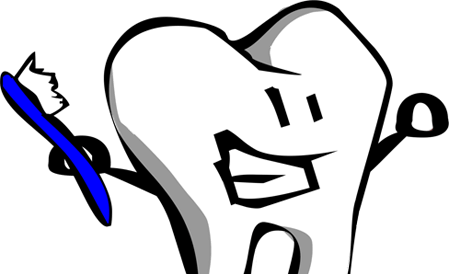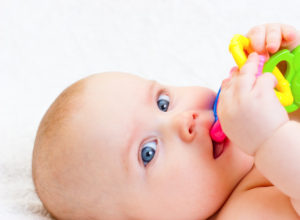Of all your baby’s milestones, one of the most exciting is the arrival of the first baby tooth. Teething occurs when the first baby tooth begins breaking through the baby’s gums. You may not know what to expect during this time in your baby’s life, so we’ve put together a list of the five things you need to know when it comes to teething.
1. When Teething Begins
The lower front baby teeth usually come in first. One to two months later, the upper front teeth make their appearance. This phase usually begins at about six months but it can be anytime between three and 12 months. All the primary teeth should come in by age 3.
2. Signs of Teething
Drooling is typical when baby teeth come. Keep a bib handy to wipe the chin to avoid chapping. Drooling may cause the development of a rash or redness. Have some Vaseline or skin cream handy.
Your baby may be irritable and cranky, and may not want to eat because of sore gums. You might find your baby pulling his or her ears and rubbing his or her cheeks during the teething process. Because of the discomfort of teething, your baby’s sleep pattern may be disrupted as well.
Swollen gums during teething may cause a low-grade fever. However, if a high fever or diarrhea does occur, contact your child’s physician for an appointment because these symptoms are probably caused by something else.
3. Teething Pain Relief
If your baby is getting fussy because of teething, these remedies might help:
- Teething ring. This is a baby product used to soothe the gums, something a baby can gnaw and rub against the gums. Shop carefully for a safe product.
- Cold, wet wash cloth. Parents can cover their finger with the wash cloth and apply soft pressure to the baby’s gums.
- Over-the-counter pain relievers. Ask your dentist for a recommendation.
4. Caring for New Teeth
Once those teeth start coming in, it’s time to buy your baby’s first toothbrush. Take time to clean the teeth after each feeding. This is the first step in establishing lifelong good dental habits for your child. This is also the time for your baby’s first trip to the dentist to get recommendations for proper care.



